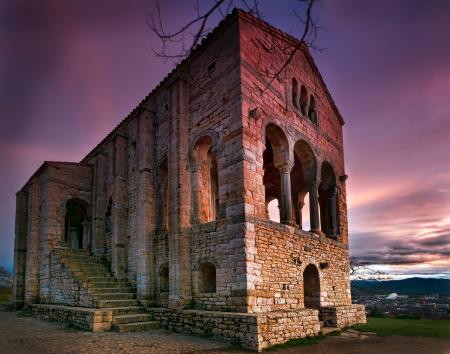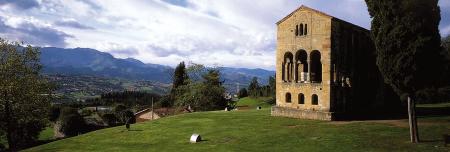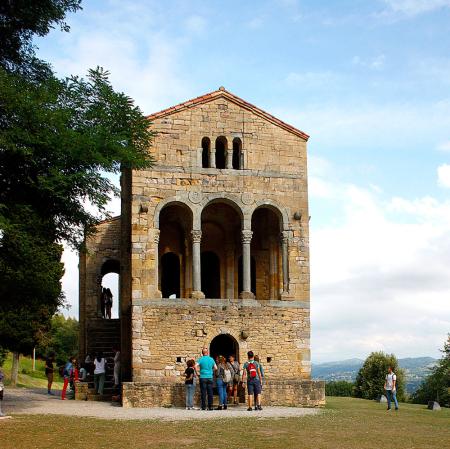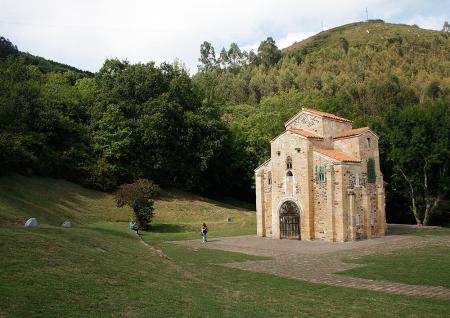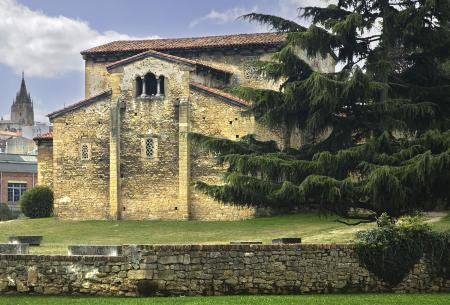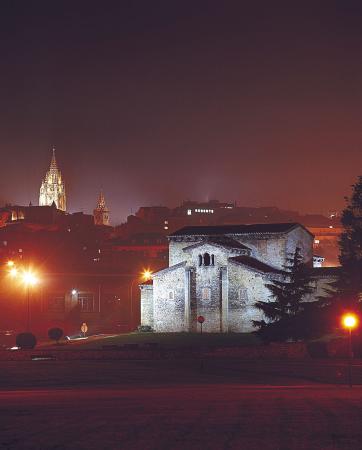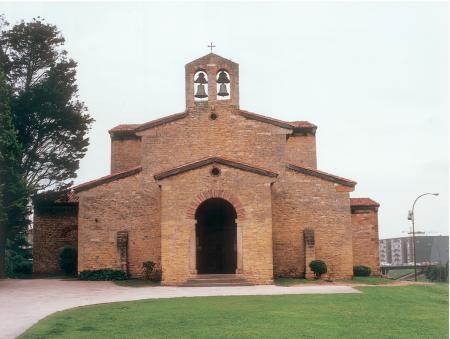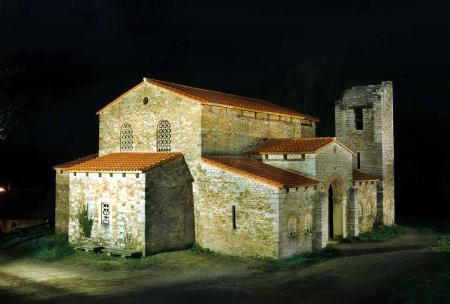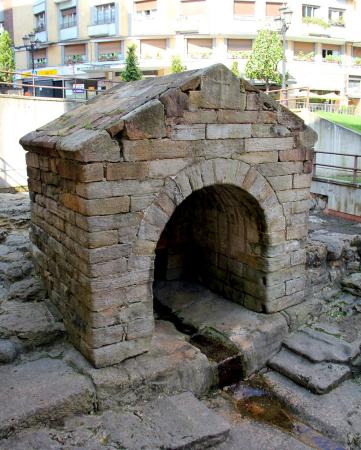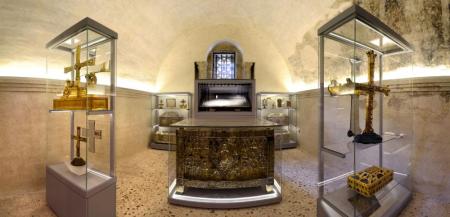pre-Romanesque
PRE-ROMANESQUE
Oviedo is home to five pre-Romanesque monuments declared World Heritage Sites by UNESCO in 1985 and 1998. An acknowledgement of “the monuments of Oviedo and the Kingdom of Asturias” which was joined, more recently, by another: the Camino Primitivo de la Ruta Jacobea (The Primitive Route of the Way of St. James), which starts precisely opposite the Cathedral.
On the Naranco, the hill that overlooks Oviedo and access to which starts in the urban area of the city, there are two monuments of the Asturian pre-Romanesque, a unique style, full of creativity, that developed between the Visigoth and the Romanesque periods.
The Naranco monuments are only 3 kilometres from the city centre and you can reach them by bus (lines A2, to the site, and A1, back to town, every hour. Lines and map at www.tua.es), or, if you prefer, you can walk there. The bus will take you to a car park just below Santa María, where you would also have to park your car. You can, then, reach the monuments along a short country path. Next to the site, you will find the Pre-Romanesque Interpretation Centre (www.prerromanicoasturiano.es) where you can find abundant information about the site, opening hours, ticket prices for all the monuments, and about activities and workshops, which are particularly interesting for children.
Santa Maria del Naranco is the most beautiful and harmonious example of a style of architecture that symbolised the power of the Kingdom of Asturias when the Caliphate of Cordoba had triumphed in the south of the peninsula. Although it was used as a church between the 12th century and the first third of the 20th century, and is still used today for religious services and belongs to a parish, the construction does not seem to fit a religious purpose. It is thought to have been a palace and part of a palatial residential complex, either official or a country retreat, of the monarch who commissioned its construction: Ramiro I (842-850). It has two floors, each with three halls, displaying great architectural innovations – barrel vaults, buttresses…- and a wealth of ornamentation – capitals, medallions…- that preceded the Gothic by several centuries. At the ends of the main hall, there are two viewpoints; the three arches of the eastern balcony have been the symbol of Asturian Tourism for many years.
About 300 metres from Santa Maria, if you continue along the path, you will come to San Miguel de Lillo or Liño.
The balcony of Oviedo and beyond
From the south of Santa Maria, you can enjoy one of the best views of Oviedo. If you prefer, the panoramic view will be even more spectacular if you continue to make your way up the Naranco Road, where the bends and steep slopes will help you appreciate the feats of cyclists participating in races that use this route. Beyond the city, you will see the Aramo Mountain Range and the breathtaking beauty of the Asturian landscape at any time of year. If you decide to make your way to the top of Mount Naranco, remember that the first slopes are gentle, with gradients of between 4 and 5 per cent, but after the hairpin bend near San Miguel, you will have to deal with gradients of up to 7 and 10 per cent and even 12 per cent near the top, if you want to reach the monument to the Sacred Heart, which can be seen from much of the city.
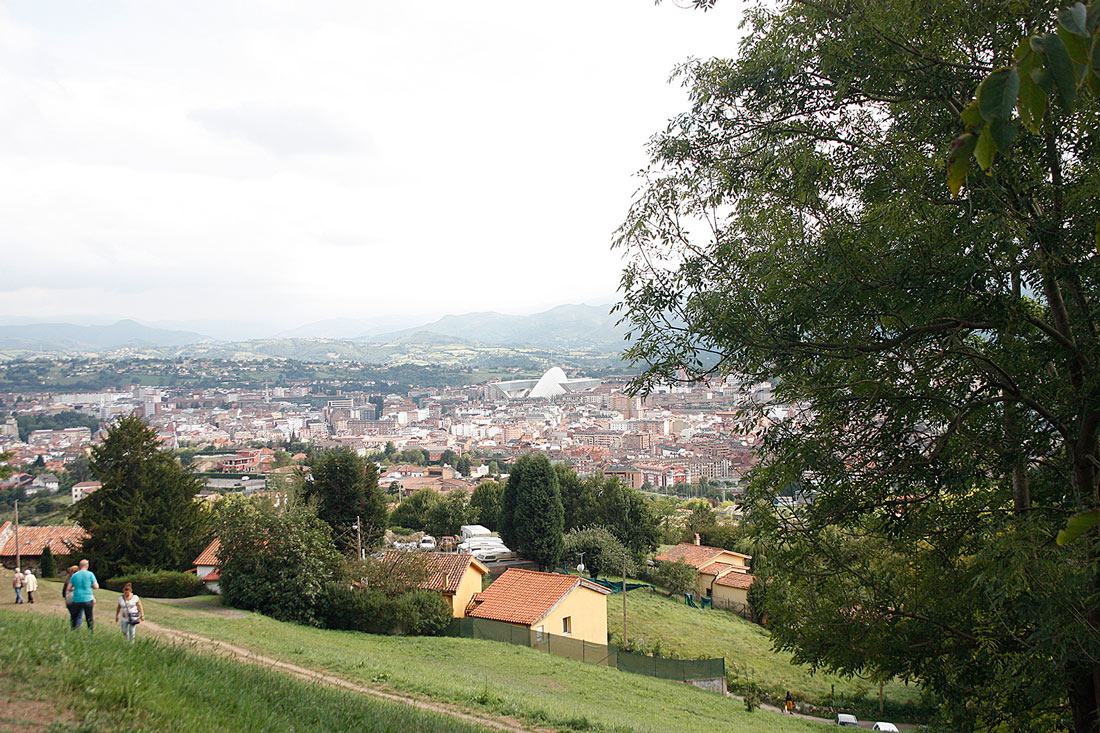
Become an “expert”: Three arches, rope moulding, and lattices
This is a great simplification, but there are certain characteristic elements of pre-Romanesque architecture, a style that began with Alfonso II the Chaste (791-842) and reached its peak with his successor Ramiro I (842-850). Look for those elements at each monument and learn to recognise them: In the windows, three arches; an upper chamber at the back that can only be accessed from the outside and whose purpose remains unknown; the pillars and other ornaments, with rope moulding; and the lattices of the windows with their filigree.
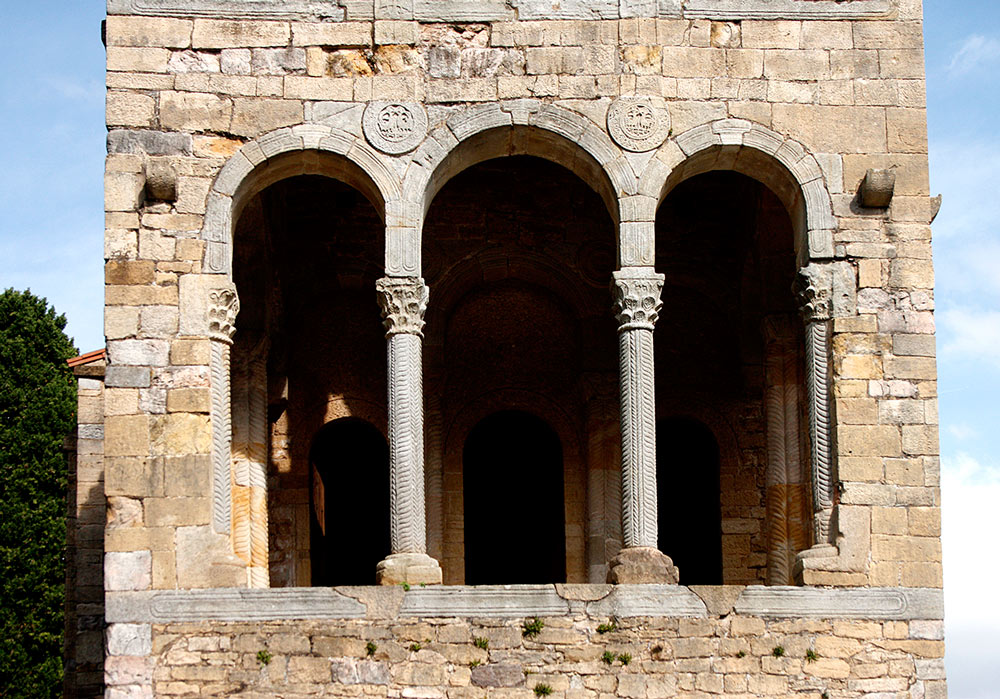
About 300 metres from Santa Maria along the path, you will come to San Miguel de Lillo or Liño, which was once a basilica, of which only a small part is preserved today. It is not as well preserved as Santa Maria since, in the 11th century, part of it collapsed, leaving only one third of the original construction standing. Stop for a moment and look at it from the outside to admire the lattices. The key aspect of San Miguel is its sculptural decoration, such as its columns, bases and capitals, although the most important elements are on the doorway jambs, where there are figures typical Roman circus figures. Inside, there are still remains of the original decorative paintings.
Choose where to eat
If you would like to have a drink after visiting the monuments or if the visit has taken longer than expected, there are restaurants, bars and picnic areas on the Naranco road. Alternatively, you can descend and stop in the neighbourhood of Vallobín. Another option would be to return to the city centre and finish off the morning by visiting the Fuente de la Foncalada (Foncalada Fountain). Or head for Santullano. In the surroundings of the latter, you have El Milán and Bermúdez de Castro Street, a university area with many excellent bars and restaurants.
The invoked fountain
In the centre of the city, halfway along Foncalada Street, there is a fountain that gives the street its name, another pre-Romanesque monument. Foncalada Fountain (“Fontem Agua Calata”), attributed to the reign of Alfonso II (791-842), appears to be part of a monumental complex of purifying baths. What remains of that “incalata” (invoked) fountain is only a small section below street level: part of the pond and a small chapel, the only example of water-related architecture of the Early Middle Ages in Spain. The inscriptions, of great significance at the time, are barely distinguishable: The Victory Cross and a legend that reads, in Latin, “This symbol protects the righteous, with this symbol the enemy is overcome”
To Santullano
To reach Santullano, go down Foncalada and take Pumarín Avenue; take the second street on the right (Dr.Melquiádes Cabal Street) and pass the El Milán University Campus, home to the Humanities Schools. The buildings were originally a Seminary and then Barracks. Opposite them is a sculpture by Eduardo Urculo “The Books that Unite us”, in tribute to the philologist, Emilio Alarcos. Further back, you will come to Santullano Park and, at the beginning of the park, the church of San Julián de los Prados, a pre-Romanesque monument with a surprising interior.
Full colour
Commissioned by Alfonso II the Chaste between 812 and 842, this Basilica, dedicated to Saints Julian and Basilisa, is known as Santullano and is the largest of the Spanish pre-Romanesque temples. It is said to be the oldest uninterrupted parish church in Europe. Inside, the walls and vaults display a decoration based on blue, yellow, red…that resembles Pompeian paintings and which was “unveiled” during the restoration project promoted by Fortunato de Selgas (1912-1917). This is another record: the largest display of fresco decoration in Europe from the Early Middle Ages; and one that has attracted an endless number of interpretations. Without figurative representations (“aniconic”) the frescoes feature squares, circles, architectural shapes, floral motifs, fretwork and hangings…forming a display in which some people see a representation of Heavenly Jerusalem.
Santullano is well preserved despite the impact of the nearby motorway. A study is currently being conducted to cushion that impact.

From the area of Santullano, return to the old quarter by making your way around Cruz Roja square along Martínez Vigil Street. You will pass the former Fábrica de Armas de La Vega (La Vega Arms Factory), now in disuse and with an uncertain future. On the right, the new urbanization of El Vasco, with a large space called Plaza de la Poesía. Above, on the left, look into Paraíso Street, where the wall still stands around its perimeter on the right and, on the left, you have the old Gas Factory and gas tank (which is not open to visitors).

